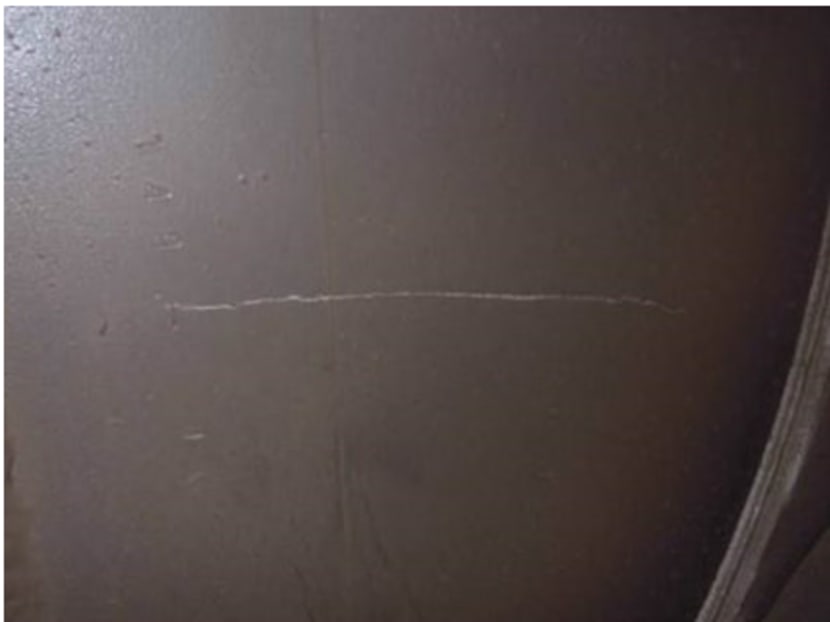26 trains SMRT ordered from China sent back for repairs
SINGAPORE — SMRT is returning a whopping 26 out of 35 of the first China-made trains it has used here — since only 2011 — for repairs, after checks showed issues with them.
SINGAPORE — SMRT is returning a whopping 26 out of 35 of the first China-made trains it has used here — since only 2011 — for repairs, after checks showed issues with them.
The issues with the trains were brought to light after a Hong Kong news agency reported that the trains were “secreted” away to be shipped back to the Chinese manufacturer’s plant to fix the defects, which were discovered in 2013.
According to the report, by FactWire, a crowd-funded investigative journalism site, the defects became apparent soon after they were put into service on the North-South and East-West lines (NSEWL).
Examples cited in the report include glass panels within train carriages repeatedly shattering due to shoddy workmanship and uninterruptible power supply batteries — made in China — exploding during repairs. These batteries were replaced with those made in Germany.
When contacted by TODAY, SMRT would only say cracks were found in the structure that connects the body of the car and the bogie — the undercarriage to which a train’s wheels are attached.
The Land Transport Authority (LTA), in response to similar questions, said the defects “are not safety-critical and do not affect the train’s systems or performance”.
Late Tuesday night (July 5), the Transport ministry put out a post on Factually to dispel rumours swirling around the incident.
Noting that these were “superficial cracks”, a spokesperson also said LTA engaged an external third party to carry out an assessment in 2013 which confirmed that the trains are safe to operate. “As advised by the third party assessment, there has also been close monitoring of the crack propagation rate.”
These defective C151A-model trains were supplied by Japanese train-maker Kawasaki Heavy Industries and the China-based CSR Qingdao Sifang Locomotive and Rolling Stock Company (CSR Sifang). The two firms, together with Kawasaki’s Singapore subsidiary, had bagged a S$368 million contract in 2009 to supply 22 six-car C151A trains meant for the NSEWL. SMRT subsequently ordered another 13 trains of the same model.
In 2014, the same consortium was also awarded a S$749 million contract to supply 91 new four-car trains — of a different model — for the Thomson-East Coast Line.
In response to queries, SMRT Trains managing director Lee Ling Wee said it had been working closely with the LTA and the manufacturer “to rectify the issue”.
“To ensure that the trains are safe for passenger service at all times, we have been monitoring the defects closely,” he added. “A monthly safety assessment is also conducted by the LTA and manufacturer before the train is put into service.”
The 26 affected trains, which are still under warranty, will be repaired by 2019.
An LTA spokesperson also said trains plying the rail network are tested extensively for safety and reliability.
“Every train also undergoes a comprehensive regime of static and dynamic testing as well as interface testing to ensure its structural and operational integrity,” the spokesperson added. “After the testing is completed, the trains are delivered to Singapore for further testing before they are placed for passenger service.”
Transport analyst Park Byung Joon said such defects were “not common” and could pose a “critical fatal fault” on a high-speed train. But because Singapore’s trains travel slower, commuters were not in danger.
Dr Park also said the timeframe set for the repairs to be completed was “an awfully long time”, which was puzzling “unless there are other fundamental issues” to be resolved.
He added that even if the train’s body had to be replaced, this would likely take only “a few months”.
The NSEWL have been plagued by a litany of woes in recent years. Last year, services on both lines came to a complete standstill for several hours in an unprecedented incident. In 2011, a massive breakdown during the evening rush hour affected 127,000 commuters at 11 MRT stations on the North-South Line..









